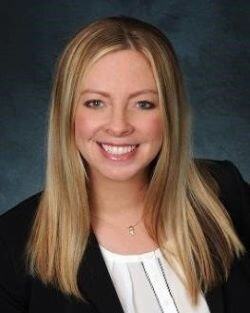A Golden Opportunity
Taking a seat at the leadership table

The COVID-19 pandemic brought about unprecedented changes in the workplace, making it a focal point for organizations worldwide. As a result, the role of facility managers has become increasingly critical to business success. FMs are playing a key role in navigating the recessionary climate by optimizing office spaces, implementing hybrid work strategies, and driving operational efficiency and cost savings. But how will facility professionals seize this golden opportunity to drive meaningful business impact? FMs should create key strategies that align facility programs with corporate objectives, utilize data and technology to make informed decisions, enhance collaboration with cross-functional teams and enhance the overall employee experience.
Get a seat at the table
Securing a seat at the leadership table is crucial for FMs to effectively contribute to the decision-making process. By being present in key discussions and sharing real-time insights, FMs can influence long-term investment strategies that directly impact an organization's ability to attract and retain top talent and manage its real estate portfolio optimally during a time of unprecedented change. Here are a few strategies that can help facility managers secure their seat at the table:
- Define and Measure Goals: Establishing clear goals that are in line with the overall mission of the company allows FMs to demonstrate their value and contribution to the organization's success. By setting measurable objectives, FMs can showcase their impact on key performance indicators (KPIs) that resonate with the leadership team.
- Communicate and Collaborate: Foster transparent and rapid partnerships with other departments, such as IT, HR and finance, to bring corporate real estate and the employee experience to life. Effective communication and collaboration create a cohesive approach toward achieving organizational goals. By actively participating in cross-functional initiatives, FMs can showcase their expertise and build strong relationships with key stakeholders.
- Test and Learn: Drive tests and experiments to gather data and insights. By sharing the results and communicating how workplace strategies can be tailored, FMs can establish feedback loops that ensure seamless information flow between departments and leaders. This iterative approach demonstrates a commitment to continuous improvement and positions facility managers as valuable contributors to the organization's success.
Align facility goals with corporate objectives: Think big
To deliver maximum value to the business from FM, it is critical to align facility goals with corporate objectives. Establishing a clear connection between facility program success, KPIs and the organization's critical financial initiatives is vital. By demonstrating how their work aligns with the organization's profit and loss (P&L) initiatives, FMs can position facilities as a partner in driving business success. To illustrate this alignment, consider addressing the following questions:
- What percentage of the portfolio is underutilized? Where? What trends can be analyzed and acted upon?
- What are the KPIs that count, and how does workplace technology help achieve those insights?
By reporting this data to the leadership team, FMs provide valuable information to make informed decisions. This approach positions facilities as a strategic function that directly impacts key business outcomes. FMs should actively engage with finance and other relevant departments to ensure that the metrics and KPIs they track align with the organization's broader objectives.
Leverage facilities data & technology
In the digital age, FMs can leverage new technology to gain a comprehensive understanding of office utilization and make data-driven decisions. Modern platforms can collect data on space utilization, employee experience and environmental design. Analyzing this data enables FMs to optimize office layouts, improve efficiency, and create a workplace that aligns with the needs and preferences of the workforce.
Collaboration with IT teams is crucial to ensure the optimal integration of this new operational technology while mitigating cybersecurity risks. FMs should work closely with IT departments to identify the most suitable technology solutions, establish data governance protocols and ensure seamless integration with existing systems. By leveraging data and technology, FMs can gain insights into occupancy patterns, space utilization and employee behaviors, enabling them to make informed decisions about workplace design, resource allocation and future investments.
Incorporating insights from the HR team regarding employee engagement, productivity and satisfaction is also essential. Facility managers should collaborate with HR to understand the workforce's needs and preferences, incorporating these insights into the design and management of the workplace. By combining data from multiple sources and working in collaboration with various departments, FMs can gain a holistic view of how the workspace is being used and its impact on employees' well-being and performance.
Collaborate with cross-functional teams
FMs must foster collaboration with cross-functional teams, including IT, HR, finance and real estate. Breaking down silos and integrating data from multiple sources helps create a synergistic view of what is happening in the rapidly changing office environment. This collaboration should involve stakeholders at all levels of the business.
By collaborating with other teams, FMs can gain vital perspectives, optimize resources, enhance the employee experience and implement change in a coordinated, more effective way. Collaborating with IT ensures that facility operational technology aligns with the organization's overall IT infrastructure and security protocols. HR insights into employee preferences and behaviors help FMs create a workspace that promotes productivity and well-being.
Facility leaders should proactively seek opportunities to collaborate with cross-functional teams by participating in interdepartmental meetings, sharing insights and data, and seeking input from key stakeholders. By fostering a culture of collaboration and inclusivity, facility teams can build strong relationships with other departments and position themselves as valuable contributors to the organization's success.
Enhance the employee experience
Facilities have always played a central role in creating exceptional employee experiences. In today's post-pandemic workplace, this role has become even more strategic. FMs must balance their historic responsibilities of keeping the office functioning smoothly with new missions that focus on creating seamless interactions between employees and the resources they need.
By acting as the control center for data, technology and insights, FMs can tailor the physical office environment to align with company culture, employee preferences and productivity goals. This creates a tremendous competitive advantage for the business. Here are some strategies to enhance the employee experience:
- Implement Flexible Workspaces: Design and implement flexible workspaces that allow employees to choose how and where they work based on their needs and tasks. This can include open collaborative areas, quiet zones and remote work options. By providing employees with choice and autonomy over their work environment, FMs can enhance employee satisfaction and productivity.
- Provide Amenities for Collaboration and Well-being: Implement amenities that support collaboration and employee well-being, such as comfortable breakout areas, wellness rooms, standing desks and recreational spaces. These amenities create an environment where employees can connect, recharge and maintain a healthy work-life balance.
- Design for Creativity and Innovation: Create spaces that inspire creativity and innovation, incorporating design elements that encourage collaboration, such as whiteboard walls, brainstorming areas and interactive technology. By providing employees with stimulating and inspiring environments, FMs can foster a culture of innovation and drive creative problem-solving.
Conclusion
Now is the pivotal moment for FMs to seize opportunities and deliver tangible results. By securing a seat at the decision-making table, aligning goals with corporate objectives, leveraging data and technology, collaborating with cross-functional teams and enhancing the employee experience, facility professionals can play a crucial role in driving organizational success at scale.
Embracing these strategies not only raises the profile of the FM discipline but also contributes to the creation of a more efficient, engaging and future-ready workplace. By proactively adapting to the changing workplace landscape and taking on a strategic role within the organization, FMs can position themselves as key contributors to business success in the evolving world of work.
FMs should embrace these strategies and actively seek opportunities to demonstrate their value and expertise. By adopting positive practices of defining and measuring goals, communicating and collaborating with other teams, and testing and learning, FMs will elevate their profile. And through the process of creating flexible workspaces, amenities for collaboration and well-being, and designing for innovation the facilities team can directly contribute to the health and productivity of employees and create a workplace that fosters success for the organization.
Sidebar
Innovation and technology should be at the core of an FM’s process. Speed to measure, learn and adapt will be a key element in creating success. The question “What are the top 10 things FMs should think about as we head into the second half of 2023?” was recently asked in ChatGPT; these are the results:
- Align Facilities Goals with Corporate Goals
- Leverage Workplace Data and Technology
- Ensure Cyber Safety Measures are Implemented
- Support the Digital Transformation of the Organization
- Collaborate with Cross-functional Teams
- Monitor Changes to the Physical Office
- Focus on the Employee Experience
- Modernize Space Utilization Goals
- Implement Cost-cutting Strategies
- Accurately Report Utilization Data to Upper Leadership

Mary Carnes has 20 years of experience in corporate real estate planning and management, helping workplace leaders navigate the complexities of today's hybrid environment. Carnes recognizes the importance of striking a balance between optimizing portfolio efficiency, driving employee engagement and promoting company culture.
Read more on Leadership & Strategy , Occupancy & Human Factors and Workplace
Explore All FMJ Topics









